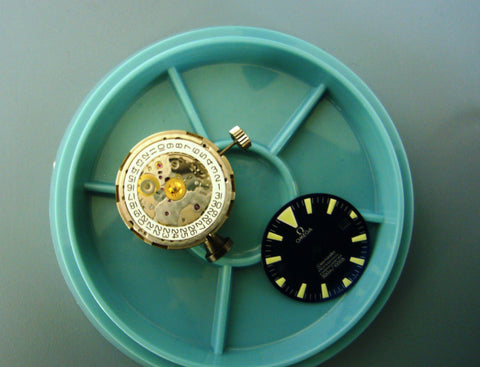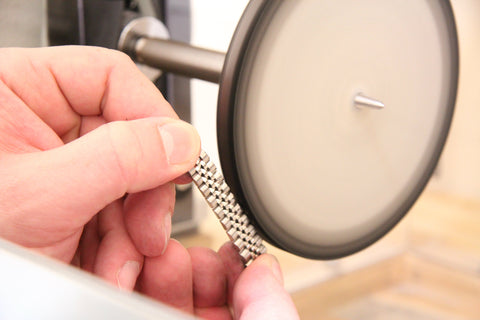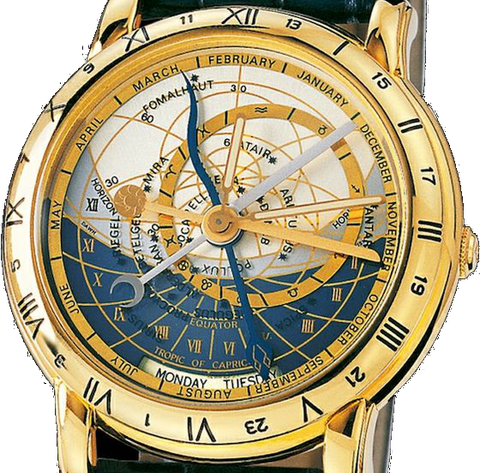What Happens During the Repair of My Watch?
Here at TimeScapeUSA, we pride ourselves on offering a full slate of watch repair services. As watchmaker and head technician, I am on the most intimate terms with your timepiece during its service journey and best placed to offer guidance and answer questions. Allow me to illustrate the process.
Estimation
In many ways the most important step, this is where the client has the greatest impact on the cost and success of the repair. Try to provide as much information as possible about the conditions under which the watch failed and the length of time since its previous service. Any clues increase the chances of performing the repair in short order and at a lower cost, especially if that clue is “I dropped the watch.”
Clients are often reluctant to admit to damaging a timepiece themselves, whether owing to embarrassment or a misguided attempt to reduce price. It is important to remember that my task is not to shame or humiliate, but rather to collaborate with the client in reaching a positive outcome. Accidents happen, and usually leave signature damages.
An initial assessment includes the verification of all functions, a full inspection of the case, and (for a running watch) tests on our diagnostic equipment to determine the timing and relative “strength” of its power output. It usually becomes necessary to open the watch to make a full exploration, during which I look for evidence of water intrusion, dirt, impact damage, or the gentle ministrations of previous technicians. Mistreatment by other watchmakers is the origin of many pernicious repair problems.
Dismantling
If a complete overhaul is needed, the next step is the dismantling of the watch. The movement is de-cased and the case itself dismantled and set aside preparatory to refinishing.

Separating modules makes it easier to locate broken parts, general wear, and mistakes or defects from previous service. As the modules themselves are dismantled and analyzed, actual repairs are performed and parts substituted. Important adjustments to complication functions, pivot endshakes, and the escapement are made at this time. Any corrosion that has been detected, as well as substantial soiling, must also be removed.
Most fully professional watch overhauls require the complete dismantling of all components to facilitate the penetration of solvents and detergents. After further inspection, all of these dozens to hundreds of little bits are sorted into a screen basket for cleaning.
Cleaning
Abraham-Louis Breguet employed an army of apprentices to clean his watches with mineral spirits and horsehair whisks while the master drank absinthe in his chambers or entertained members of the court. Contemporary technicians are not so lucky, and must resort to modern cleaning machines. These typically consist of an arrangement of separate jars filled with first a detergent, and then a sequences of rinses followed by a drying interval. More effective machines employ ultrasonic action during cycles.
In the case of particularly delicate (or small) parts, cleaning must often be performed the old-fashioned way. The technician who places a minuscule, one-of-a-kind duplex escapement wheel in a cleaning basket and sends it merrily into his machine invites a special kind of horrible outcome. Some restoration specialists, especially those specializing in museum pieces, never resort to machine cleaning at all.
After cleaning, the parts are inspected for damage, the adhesion of random gunk from the cleaning solution, and spotting from the drying cycle. It is time for the assembly.
Assembly
Depending on the caliber and the requirements of particular brands, certain components may need pre-treating with Fix-o-drop or a similar epilaume-type sealant. This is common with escapement components like escape wheel teeth and pallet stones, or in other situations where keeping lubricants localized is especially important.
Sub-assemblies such as balance jewels, barrels, and bridges are first put back together and lubricated. A typical watch assembly will require at least six different grades of lubricant, and some of the fiercer complications may require as many as ten. Assembly of the caliber proceeds in a logical way, allowing for continuing verification as it proceeds. Ideally, the train and escapement can be observed for function prior to adding other supplementary modules. A caliber build may take anywhere from an hour to a couple of days, depending on complexity and the number of adjustments needed.
People often ask me if special dexterity or super-human vision are requirements in my profession, and I can say in all honesty that it isn't so. The trait that suits me to watchmaking more than any other is this: after a ten hour build, upon discovering a minor flaw necessitating a watch be torn down to the screws, I just sigh and do it all over again.
Initial observations of timing and amplitude are taken of the bare movement before the watch is dialed and re-cased, though these need all be repeated when the watch is complete: minor tensions created in the casing process can alter the behavior of a watch, sometimes significantly, requiring compensatory adjustments. All of the watches functions are checked before the dial and hands are installed
Casing
 Case refinishing is it's own separate discipline, requiring patience and a light touch. The client may expect every single scratch and ding to disappear, but there are consequences. Polishing removes metal, it doesn't add it back. Once the case components have been refreshed and ultrasonically cleaned, the case is rebuilt using new gaskets where necessary, and pressure tested. This can be as simple as a low pressure dry test, or as complicated as a multi-step immersion test requiring hours at fantastic pressures.
Case refinishing is it's own separate discipline, requiring patience and a light touch. The client may expect every single scratch and ding to disappear, but there are consequences. Polishing removes metal, it doesn't add it back. Once the case components have been refreshed and ultrasonically cleaned, the case is rebuilt using new gaskets where necessary, and pressure tested. This can be as simple as a low pressure dry test, or as complicated as a multi-step immersion test requiring hours at fantastic pressures.
When the case is complete, the movement is installed and the function of external controls like the crown and pushers are checked. Quartz-regulated pieces are evaluated for current consumption. Generally, the watch endures more direct observation of timing prior to a final verification of water resistance.
Testing
The finished watch is most likely ready to rejoin the client, but any legitimate watchmaker will require some duration of testing before it is allowed to leave. This exposes the completed watch to a simulation of the real world without the dangerous risks, and is the technicians last chance to catch issues or mistakes that would certainly manifest on the customer's wrist.
For quartz watches, unless they are mechanically charged like the Seiko Kinetic, further testing is usually unnecessary. But for mechanical timepieces the following are required
- Timing: does the watch adequately maintain its rate over time, and at different states of power? This kind of observation can take a number of days to return useful results.
- Wind: does the watch's automatic system reliably charge the watch with power? Generally the watch is agitated by a machine that imitates the motion of the client and then observed to check the duration of its autonomous run. Manually wound watches can skip this step.
-
Calendar and Complication Function:
 does the watches calendar, moonphase, or chronograph counting functions act as they should? For complicated pieces, this test can take as long as a week. Ulysse Nardin's Astrolabium must spend an entire month in test for the verification of its many components. Imagine the mindset of the technician whose watch fails on the 29th day of testing and must be dismantled to start from scratch.
does the watches calendar, moonphase, or chronograph counting functions act as they should? For complicated pieces, this test can take as long as a week. Ulysse Nardin's Astrolabium must spend an entire month in test for the verification of its many components. Imagine the mindset of the technician whose watch fails on the 29th day of testing and must be dismantled to start from scratch.


 does the watches calendar, moonphase, or chronograph counting functions act as they should? For complicated pieces, this test can take as long as a week.
does the watches calendar, moonphase, or chronograph counting functions act as they should? For complicated pieces, this test can take as long as a week. 




Craig Zaligson
Author